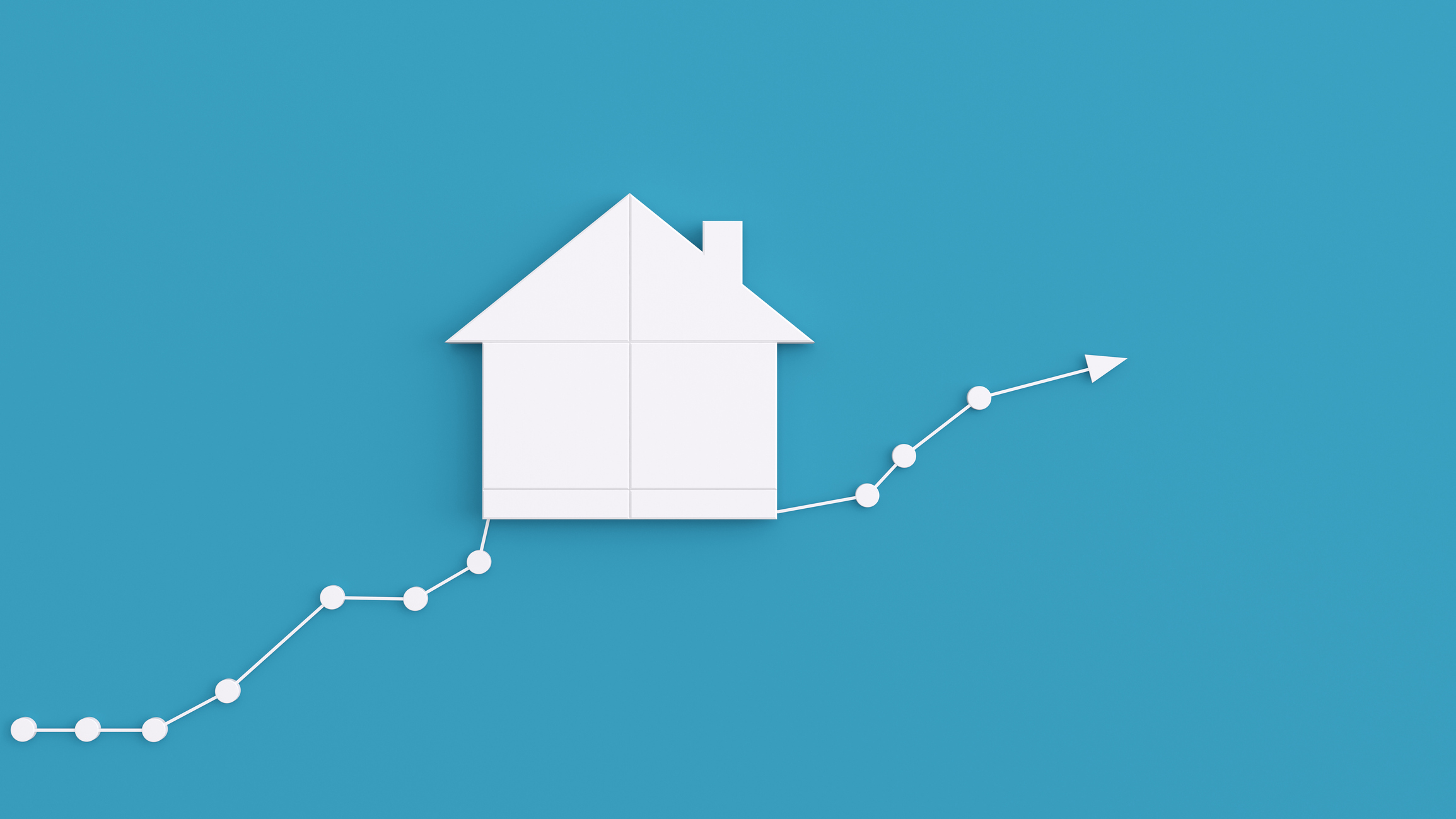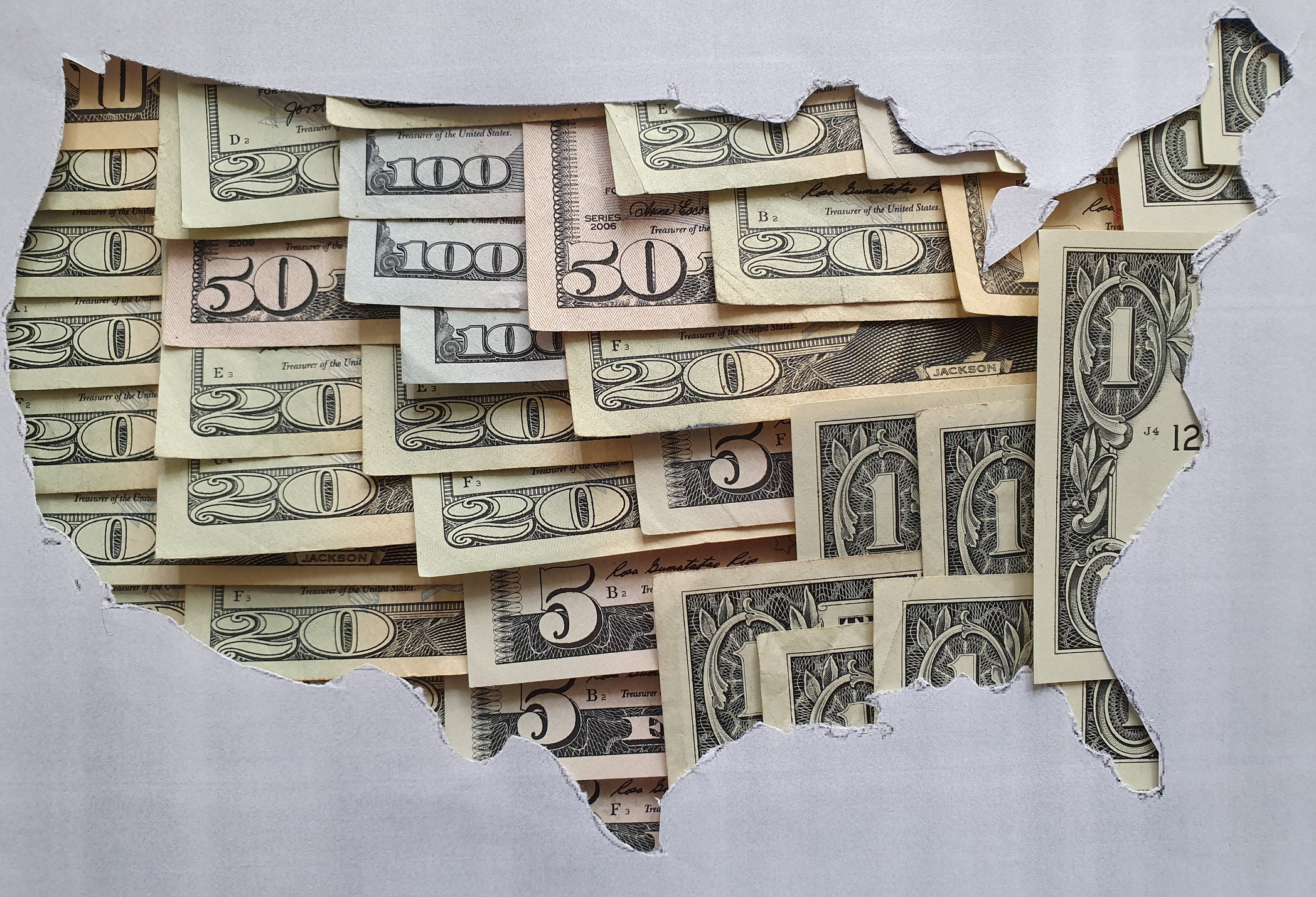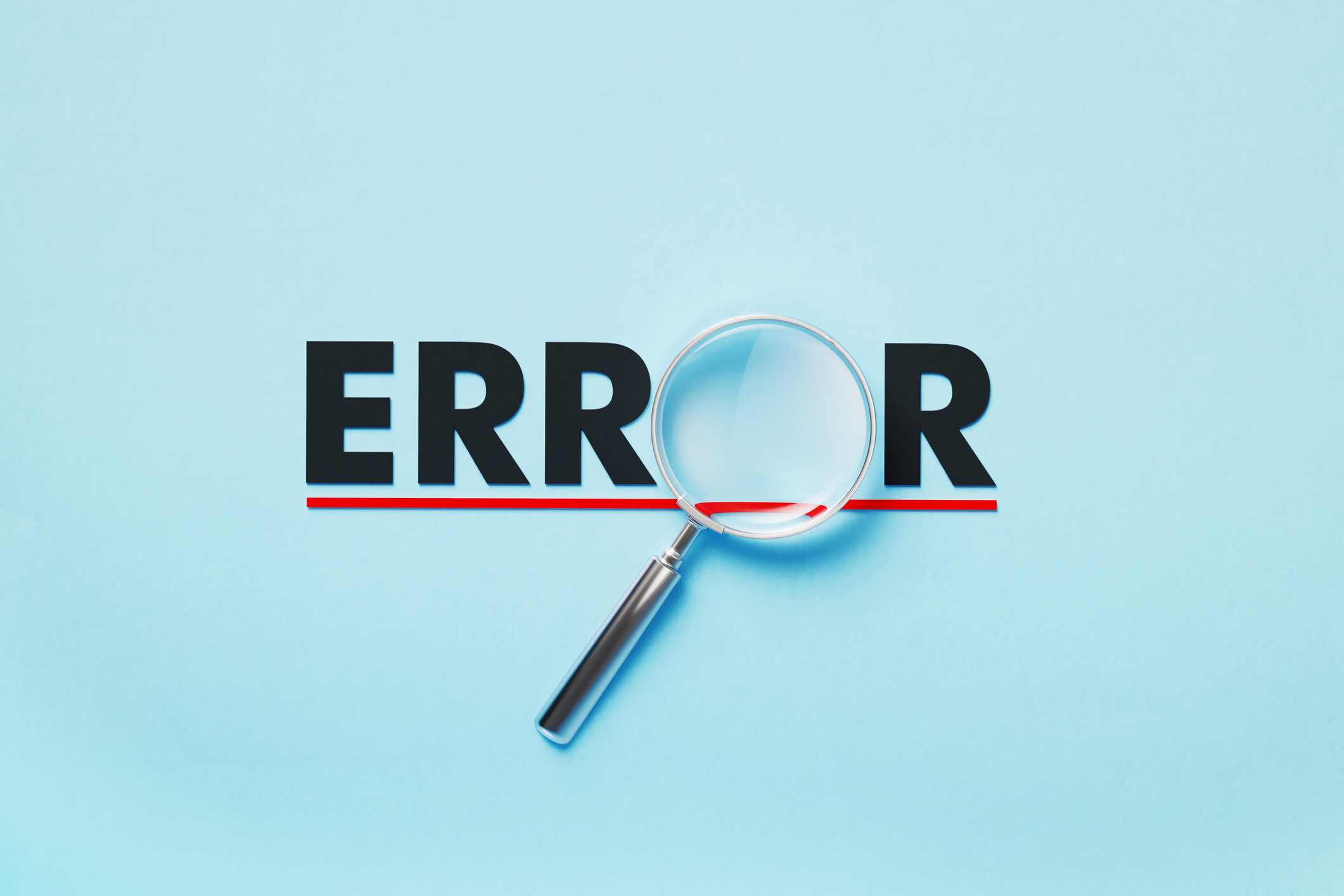Capital Gains Tax on Real Estate and Home Sales
When selling your home or a rental property at a gain, there are important capital gains tax rules to keep in mind.


Knowing the rules for capital gains tax on residential real estate and home sales is important, especially since your property has likely increased in value since you purchased it.
Eventually, when you dispose of the property, either voluntarily or involuntarily, you'll need to determine the federal income tax consequences of that built-in appreciation, including some important situations in which your gain might be tax-free or otherwise deferred.
Perhaps you want to sell your main home, vacation home, or residential rental property that you own. Or you might, unfortunately, be experiencing financial trouble and are considering negotiating a short sale of your home with the bank. Other people may have had their homes destroyed in a wildfire, hurricane, tornado, torrential storm or other federally declared disaster. You certainly don’t want to be hit with a larger-than-necessary tax bill.

Sign up for Kiplinger’s Free E-Newsletters
Profit and prosper with the best of expert advice on investing, taxes, retirement, personal finance and more - straight to your e-mail.
Profit and prosper with the best of expert advice - straight to your e-mail.
Continue reading to find out how your capital gains may be taxed (or not) in different situations, including a few ways to defer a potential capital gains tax hit.
Capital Gains Basics
How capital gains tax works
Many people know the basics of the capital gains tax. Gains on the sale of personal or investment property held for more than one year are taxed at favorable capital gains rates of 0%, 15%, or 20%, plus a 3.8% net investment income tax for people with higher incomes.
- The capital gains rates are based on set income thresholds, which are adjusted annually for inflation.
- For 2024, the 0% rate applies to individuals with taxable income up to $47,025 for single filers, $63,000 for head-of-household filers, and $94,050 for joint filers. The 20% rate starts at $518.901 for single filers, $551,351 for head-of-household filers and $583,751 for joint filers. The 15% rate is for individuals with taxable incomes between the 0% and 20% break points.
- For 2025, the 0% rate applies to individuals with taxable income up to $48,350 for single filers, $64,750 for head-of-household filers, and $96,700 for joint filers. The 20% rate starts at $533,401 for single filers, $566,701 for head-of-household filers, and $600,051 for joint filers. Again the 15% rate is for individuals with taxable incomes between the 0% and 20% break points.
Compare this with gains on the sale of personal or investment property held for one year or less, which are taxed at ordinary income rates up to 37%.
But there are lots of exceptions to these general rules, with some major carveouts applying to residential real estate.
Primary Home Sales
Capital gains tax on the sale of a primary home
Spring is a popular time for selling a home. So knowing the capital gains tax rules is vital if you have recently sold your primary home or are thinking of selling.
Home Sale Exclusion
Lots of home sale profit isn't even taxed. That's because of the home sale exclusion. If you have owned and lived in your main home for at least two out of the five years before the sale date, up to $250,000 ($500,000 for joint filers) of your gain is tax-free.
Any gain above the $250,000 or $500,000 exclusion amounts is taxed at long-term capital gains rates. Losses from sales of primary homes are not deductible.
Here's an example: Say you're married, bought your home in 1995, have a tax basis of $250,000, and are selling the home for $650,000. The entire $400,000 gain is tax-free.
Let's now take the same example, but instead of selling the home for $650,000, you sell it for $900,000. The first $500,000 of the gain is tax-free, and the remaining $150,000 is taxed at long-term capital gains rate.
If you must sell your home early, you may still be eligible for a portion of the exclusion, depending on the circumstances. Sales due to job changes, illness, or unforeseen circumstances qualify.
The percentage of the $500,000 or $250,000 gain exclusion that can be taken is equal to the portion of the two-year period that you used the home as a residence.
For example, say a single person bought a home for $720,000 in March 2023, lived in it for 15 months, and sold it in May of last year for $785,000 after moving out of state for a job. The maximum gain exclusion in this instance is $156,250 ($250,000 x (15/24)). So, the $65,000 gain is fully excluded and tax-free. You can use days or months for this calculation.
Calculating the Gain on Your Home
To determine your gain or loss from the sale of your primary home, you start with the amount of gross proceeds reported in Box 2 of Form 1099-S and subtract selling expenses such as commissions to arrive at the amount realized. You then reduce that figure by your tax basis in the home to come up with your gain or loss.
Figuring out the tax basis in your home
Many homeowners won’t crack the $250,000/$500,000 home sale gain exclusion limits. But those living in pricey areas, or who’ve owned their homes a long time, may. If you’re in this boat, you should know what counts toward your home basis so you don’t pay more federal income tax than necessary when you sell the home.
- To figure the tax basis in your home, start with the original cost, including the mortgage if you financed the purchase, add certain settlement fees and closing costs, plus the cost of any additions as well as improvements that add to the value of your home, prolong its useful life, or adapt it to new uses.
- IRS Publication 523 has some examples of improvements that increase your tax basis in the home and those that don’t. Examples of big-ticket items that are added to your basis include adding a room, installing new air-conditioning, renovating a kitchen, finishing a basement, or putting in new landscaping or a pool. Smaller-ticket capital improvements can also increase basis. These include new doors and windows, duct and furnace work, built-in appliances and water heaters. Repairs, maintenance and improvements that are necessary to keep your residence in good condition but don't add value or prolong its life generally don't hike basis.
- If you claim a tax credit or otherwise receive a subsidy for putting in energy-savings improvements in your home, you must first reduce the cost of the system by the tax credit or subsidy that you received before increasing your home's tax basis.
- You must reduce the tax basis in your home by any depreciation deductions you were eligible for if you used a room or other space exclusively or regularly for business or if you rented out your home in the past.
Homeowners who keep good records will find it easier to calculate tax basis. Tracking what you originally paid for the home and any settlement fees is simple if you kept your settlement sheet from the purchase. It’s best to keep all your major home improvement receipts and invoices in one folder. If you didn’t keep these records, estimate the costs by looking at old bank statements, or call the company that originally did the remodeling or put in the upgrade.
Related: Capital Gains Tax Home Sale Exclusion: What to Know

Selling primary home after death of a spouse
A spouse who sells the family home within two years after the death of the other spouse gets the full $500,000 exclusion that is generally available only to couples, provided the two-out-of-five-year use and ownership tests were met before death.
- There is also a welcome added tax benefit if you owned the home jointly with your spouse.
- If you don’t live in a community property state, half of the home will get a step-up in tax basis upon the death of the first-to-die spouse.
- The rule is more generous if the house is held as community property. The entire tax basis is stepped up to fair market value when the first spouse dies.
Here’s an example.
Let’s say you and your spouse bought a home for $150,000 many years ago in a non-community property state, and it is worth $980,000 on the date the first of you dies. The survivor’s tax basis in the home jumps to $565,000 (his or her half of the original $150,000 basis plus half of the deceased spouse’s $980,000 date-of-death value).
Twenty months later, the surviving spouse sells the home for $1,085,000. Of the $520,000 gain from the home sale ($1,085,000 - $565,000), $500,000 is tax-free and $20,000 is taxed at long-term capital gains rates.
Selling a primary home where you claimed a home office deduction
You may be wondering whether the capital gain tax on the sale of your home would differ if you took the home office tax deduction in prior years for using a room or other space in your residence exclusively and regularly for business or rental (e.g., as a home office or the rental of a spare bedroom). It depends.
Generally, the tax consequences are the same whether or not the home office deduction was previously claimed. Gain on the office or rental portion generally qualifies as part of the $250,000/$500,000 capital gains tax exclusion for a primary home sale, subject to two exceptions.
The first is for so-called unrecaptured Section 1250 gain, which applies if you took depreciation deductions in the past for the office or rental space. (This is discussed in more detail below.) If you used the simplified method to claim home office deductions on your return, you don't have to worry about this.
The second exception applies if the workspace or rental space is in a building on the property separate from the main home — think first-floor storefront with an attached residence, rented apartment in a duplex, or working farm with a farmhouse on the property.
Rental Property
How are capital gains calculated on rental property?
If you hold rental property, the gain or loss when you sell is generally characterized as a capital gain or loss. If the property was held for more than one year, it's a long-term capital gain or loss, and if held for one year or less, it's a short-term capital gain or loss.
The gain or loss is the difference between the amount realized on the sale and your tax basis in the property.
The capital gain will generally be taxed at 0%, 15%, or 20%, plus the 3.8% net investment income surtax for people with higher incomes. However, a special rule applies to gain on the sale of rental property for which you took depreciation deductions.

When depreciable real property held for more than one year is sold at a gain, the federal tax law requires that previously deducted depreciation be recaptured into income and taxed at a top rate of 25%. This is known as unrecaptured Section 1250 gain, the number of its federal tax code section.
Vacation Home
Capital gains on sale of vacation home
Gains from the sale of vacation homes don't qualify for the $250,000/$500,000 capital gains tax exclusion that applies to the sale of main homes. You will pay tax on the entire amount of your profit.
When you sell a vacation home, your gain will be subject to the normal capital gains tax on real estate.
So if you've owned the home for more than one year before you sell, the difference between your amount realized on the sale and your tax basis in your home is subject to capital gains tax rate of 0%, 15%, or 20%, depending on your income, plus the 3.8% net investment income surtax for upper-income individuals.
If you owned the vacation home for a year or less, then any gain from the sale will be taxed at ordinary income tax rates up to 37%.
For example, say that in 2024, you sell a vacation home that you owned since 2010 for $775,000, and you have a tax basis of $535,000. Your $240,000 gain is taxed at long-term capital gains rates. As with primary homes, you can't deduct a loss on the sale of a vacation home.
What if you convert a vacation home to your primary residence, live there for at least two years, and then sell it? Can you qualify for the full $250,000/$500,000 capital gains tax exclusion? The answer is generally no.
- If you sell a main home that you previously used as a vacation home, some or all of the gain is ineligible for the home-sale exclusion.
- The portion of the gain that is taxed is based on the ratio of the period after 2008 that the home was used as a second residence or rented out to the total time that the seller owned the house.
- The remaining gain is eligible for the $250,000 or $500,000 home-sale exclusion.
Other Situations Where Capital Gain May be Lowered or Deferred
Short sale
Some financially distressed homeowners might be considering a short sale of their home. A short sale occurs when your mortgage lender agrees to accept less than the outstanding balance on your loan to help facilitate a quick sale of the property. The tax rules applicable to short sales differ depending on whether the debt is recourse or nonrecourse.
Recourse debt is when the owner/debtor remains personally liable for any shortfall. If the lender forgives the remaining debt, a special tax rule provides that up to $750,000 in forgiven debt on a primary home is tax-free. The owner/debtor will be taxed on any remaining forgiven debt at ordinary income tax rates up to 37%.
The tax results are different for nonrecourse debt, meaning the owner/debtor isn't personally liable for the deficiency. In this case, the waived debt is included in the amount realized for calculating capital gain or loss on the short sale. For primary homes, no loss is allowed, and up to $250,000 of gain ($500,000 for joint filers) can be excluded from income for homeowners that meet the two-out-of-five-year use and ownership tests.
These same rules apply if your home is foreclosed on.
Disasters
If your principal residence is damaged or destroyed in a hurricane, widespread wildfire, or other federally declared disaster, you'll have gain to the extent the insurance proceeds you receive exceed your pre-disaster tax basis in the home.
Up to $250,000 ($500,000 for joint filers) of that gain is excluded from income if you meet the two-out-of-five-year use and ownership tests. Gain more than those amounts is taxed at capital gains rates.
One way to delay the tax hit on all or part of the otherwise taxable capital gains is to use the proceeds you get from your insurance company to buy a new home within four years of the disaster. The so-called "involuntary conversion" rules are complex, so be sure to contact your tax adviser if you are thinking about going down this road.
Section 1031 exchanges
When real property used in a business or held for investment is exchanged for like-kind real property under Section 1031 of the tax code, all or part of the gain that would otherwise be triggered if the realty were sold can be deferred. This tax break doesn't apply to main homes or vacation homes, but it can apply to rental real estate that you own.
The Section 1031 exchange rules are very complicated and tricky, with many requirements to meet. As a result, make sure to talk to your tax adviser if you're contemplating a like-kind swap.
Qualified Opportunity Funds
The Qualified Opportunity Zone program was created under Donald Trump’s 2017 tax reform law, the Tax Cuts and Jobs Act (TCJA).
- The program allows taxpayers to defer capital gains from the sale of business or personal property, including real estate, by investing the proceeds in entities called Qualified Opportunity Funds.
- These QOFs then use the money to help the development of struggling communities.
- This program is set to expire after 2026.
Let’s say you have a large capital gain from the sale of a rental home that you owned, and you want to defer paying federal income tax on that gain. If you can invest those gains proceeds in a QOF, you could see lots of tax benefits.
The gains are deferred until the earlier of Dec. 31, 2026, or when you dispose of your QOF interest. The tax would generally be owed at that time on the deferred gains less the tax basis in the QOF investment.
The longer one holds a QOF investment, the more tax incentives there are. You, as the investor, would begin with a zero-tax basis.
How long you hold your QOF Investment | What happens to your basis |
|---|---|
If you hold your QOF investment for at least 5 years | Your basis in it increases by 10% of the originally deferred gain, meaning that 10% of the deferred gain can go permanently untaxed. |
If you hold your QOF investment for at least 7 years, | Your tax basis in it is further increased by 5% of the gain that was originally deferred. |
If you hold your QOF investment for 10 years or more | You can then elect to increase your basis to fair market value at the time you sell the investment, so that post-acquisition appreciation in the QOF isn’t taxed when the interest is sold. |
(Note that the deferred gain from your real estate sale will be taxed in 2026.)
You have 180 days from selling your real estate to invest the proceeds in a QOF. You can invest all of your short- or long-term capital gain proceeds from the sale or just part of the gains. But if you invest part of the gains, only that portion of the gains contributed to the QOF qualifies for deferral.
If you decide to go the QOF route, you must elect the tax deferral on your tax return for the year of the sale. Follow the instructions on Form 8949 for electing deferral and reporting the deferred gain and submit Form 8949 with your return.
Also, you’ll have to complete and attach Form 8997 to your return. The 8997 lets the IRS know of the QOF investment and the amount of gain deferred, among other information.
Related Content
Get Kiplinger Today newsletter — free
Profit and prosper with the best of Kiplinger's advice on investing, taxes, retirement, personal finance and much more. Delivered daily. Enter your email in the box and click Sign Me Up.

Joy is an experienced CPA and tax attorney with an L.L.M. in Taxation from New York University School of Law. After many years working for big law and accounting firms, Joy saw the light and now puts her education, legal experience and in-depth knowledge of federal tax law to use writing for Kiplinger. She writes and edits The Kiplinger Tax Letter and contributes federal tax and retirement stories to kiplinger.com and Kiplinger’s Retirement Report. Her articles have been picked up by the Washington Post and other media outlets. Joy has also appeared as a tax expert in newspapers, on television and on radio discussing federal tax developments.
-
 6 Stunning Waterfront Homes for Sale Around the US
6 Stunning Waterfront Homes for Sale Around the USFrom private peninsulas to lakes, bayous and beyond, Kiplinger's "Listed" series brings you another selection of dream homes for sale on the waterfront.
By Charlotte Gorbold Published
-
 Six Reasons to Disinherit Someone and How to Do It
Six Reasons to Disinherit Someone and How to Do ItWhether you're navigating a second marriage, dealing with an estranged relative or leaving your assets to charity, there are reasons to disinherit someone. Here's how.
By Donna LeValley Published
-
 Free IRS Tax Filing for 30 Million People: Will It Continue Under Trump?
Free IRS Tax Filing for 30 Million People: Will It Continue Under Trump?Tax Filing Direct File was piloted last year in 12 states and has since expanded to 25. But some wonder whether the program will last under the Trump administration.
By Gabriella Cruz-Martínez Last updated
-
 How Caregivers for Adults Can Save on Taxes in 2025
How Caregivers for Adults Can Save on Taxes in 2025Tax Breaks Caring for your parent or spouse can be stressful, but the IRS offers tax breaks for qualifying taxpayers. Here they are.
By Kate Schubel Published
-
 U.S. Treasury to Eliminate Paper Checks: What It Means for Tax Refunds, Social Security
U.S. Treasury to Eliminate Paper Checks: What It Means for Tax Refunds, Social SecurityTreasury President Trump signed an executive order forcing the federal government to phase out paper check disbursements by the fall.
By Gabriella Cruz-Martínez Published
-
 IRS Layoffs Spark Delays, Doubt This Tax Season
IRS Layoffs Spark Delays, Doubt This Tax SeasonTax Season Tax experts say Trump’s downsizing of the IRS is already causing problems.
By Gabriella Cruz-Martínez Last updated
-
 States with the Highest Income Tax Rates for Retirees
States with the Highest Income Tax Rates for RetireesState Tax You may reconsider living and retiring in one of these states due to high taxes.
By Kate Schubel Last updated
-
 AI Tax Scams Target Middle and Older Adults: What to Know
AI Tax Scams Target Middle and Older Adults: What to KnowScams Whether you’re a retiree or Gen Z, scammers can gouge big financial losses with the help of artificial intelligence.
By Kate Schubel Published
-
 Tax-Deductible Home Improvements for Retirement in 2025
Tax-Deductible Home Improvements for Retirement in 2025Retirement Taxes Your aging-in-place plan could benefit from the medical expense tax deduction. But watch out for capital gains and property taxes.
By Kate Schubel Published
-
 Don’t Make These Five Mistakes on Your Tax Return
Don’t Make These Five Mistakes on Your Tax ReturnTax Filing The IRS warns taxpayers to watch out for these common errors as they prepare to file.
By Gabriella Cruz-Martínez Published